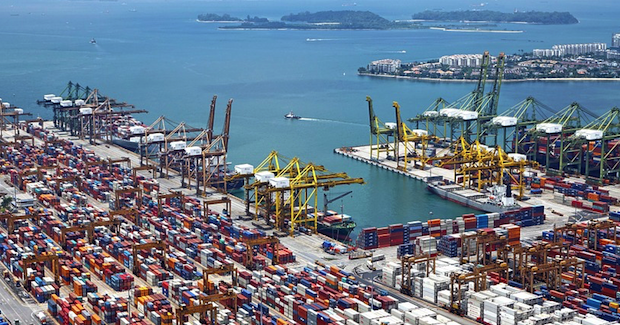US Policy Shift Leaves Lucrative Vacuum in TPP

Has the US withdrawal from the Trans-Pacific Partnership opened the door for others to take a leadership role in what was to be the world’s largest trade agreement? Australia, Japan and even China may still benefit if the TPP is implemented without the US.
Of the 12 nations that signed the Trans-Pacific Partnership (TPP), the United States was without question the most important. However there are other significant nations in TPP. Japan is the third largest economy in the world; and Australia, Canada and Mexico are all members of the G20. Do these countries have the heft or interest to continue TPP without the United States?
A very particular challenge lies in the underlying rationale for TPP. The Obama administration saw TPP as the centrepiece of its strategy to counterbalance China; the TPP would tie bind key United Sates partners in a comprehensive economic partnership that conspicuously excluded China. This strategic goal cut no ice in the Trump administration; domestic considerations greatly outweighed any such considerations. In fact, candidate Trump’s early opposition to TPP was a key factor in him winning the election. So even a TPP modified to deal with President Trump’s concerns held no interest for him.
Without the United States, TPP cannot fulfil the role as a counterbalance to China. However, this was always primarily a United States interest; it was of no great concern to the other members. Thus a TPP without the United States has to be principally justified on economic grounds. While it does tie together nations who are allies or partners of the United States, none of them has a dominant interest in excluding China.
There is a caveat to that point. China is driving Comprehensive Regional Economic Partnership (RCEP) negotiations, and many of the TPP parties are part of that. But the agreement envisaged by RCEP is not as nearly far reaching as TPP. The TPP members who are also negotiating partners in RCEP were hoping that TPP would have the effect of pushing the ambition of RCEP. This is far less likely now. Nevertheless if TPP is implemented among the remaining nations, it will still provide some pressure to improve the RCEP.
So the question is, do the remaining TPP members have sufficient incentive to actually bring TPP into effect?
The principal economic advantage of the TPP is that it includes Japan within a high quality regional trade agreement. Currently the great bulk of Japanese international trade occurs under the auspices of the World Trade Organization (WTO) or General Agreement on Tariffs and Trade (GATT) rules. The WTO has it greatest impact in trade in manufactures; agricultural protectionism is largely untouched and there are large carve outs for services. Thus the WTO suits Japan well. Japan has been able to protect its agriculture sector while facing low barriers to its exports of high quality manufactures.
The TPP goes a significant way to opening up agriculture and services to the international market. TPP will require Japan to adjust its economy. However, in these times—partly due to long period of low growth and to demographic changes—it will suit Japan and Prime Minister Abe to open up the Japanese economy.
TPP also offers Japan the opportunity to assert a broader leadership role within the Asia-Pacific. If the United States is absent, then there is a void to be filled. The same point can also be made of Australia’s role.
If the United States is withdrawing from a leadership role, other nations can step up. The TPP gives Japan an opening to lead in respect of a significant regional initiative.
This leadership role does not just apply among the TPP members. It also affects China. If the TPP can place pressure on the ambition of RCEP, this will also have the effect of modernising the economy of China. This opens the possibility of China being able to accept the conditions of the TPP. An arrangement that includes China and Japan, but not the United States, may have the effect of moderating tensions between China and Japan.
The United States will then have to seriously consider whether it is in its long-term interests to join TPP. The election of President Trump does not remove the need to calculate the balance between the great powers of the Asia-Pacific region. If anything it may sharpen it.
The continuation of TPP is now dependent upon its remaining members. The leaders among them, including those who may seize the opportunity, now have the responsibility to make a fresh assessment of how the TPP can advance peace and prosperity in the Asia-Pacific.
The alternative is to be the meek followers of whatever direction the United States chooses.
The Hon Dr Wayne Mapp is a New Zealand law commissioner. From 2008 to 2011 he was New Zealand’s minister of defence and minister of science and technology.
This article is published under a Creative Commons Licence and may be republished with attribution.





